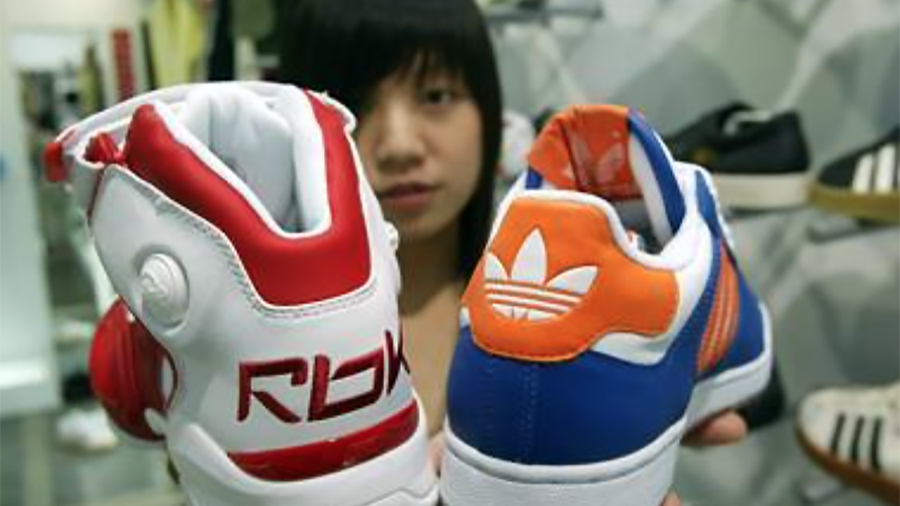Yue Yuen reported a profit against a loss in the nine months ended September 30, 2021. Sales jumped 5.8 percent.
Revenue Analysis
The Group recorded revenue of US$6,441.2 million in the nine months ended September 30, 2021, representing an increase of 5.8 percent compared to revenue of US$6,086.7 million in the same period of 2020, with the solid recovery seen in the first half of 2021 largely offset by the disruption to its manufacturing operations in Vietnam and weak retail sales in the third quarter.
In the first nine months ended September 30, 2021, revenue attributed to footwear manufacturing activity (including athletic/outdoor shoes, casual shoes and sports sandals) increased by 3.2 percent to US$3,300.5 million, compared with the corresponding period of last year. The volume of shoes shipped during the period was 179.0 million pairs, with demand for the Group’s shoe products remaining solid. However, the earlier recovery of shipments was neutralized by the negative impact of the recent pandemic lockdowns in Vietnam, increasing slightly as compared with the same period of last year.
The average selling price increased by 3.1 percent to US$18.43 per pair, as compared with the corresponding period of last year, led largely by its continued efforts to upgrade its mix with a focus on more high-value orders.
In the first nine months of 2021, the Group’s total revenue with respect to the manufacturing business (including footwear, as well as soles, components and others) was US$3,656.0 million, representing an increase of 5.4 percent as compared with the corresponding period of last year.
During the period, the revenue attributed to Pou Sheng, the Group’s retail subsidiary, increased by 6.3 percent to US$2,785.2 million, compared to US$2,619.3 million in the corresponding period of last year. In RMB terms (Pou Sheng’s reporting currency), revenue during the first nine months in 2021 decreased by 1.7 percent to RMB18,021.3 million, compared to RMB18,341.3 million in the corresponding period of last year, which was mainly attributed to market dynamics and sporadic pandemic outbreaks across China in recent quarters.
Gross Profit
In the first nine months of 2021, the Group’s gross profit increased by 24.2 percent to US$1,560.3 million, while the gross profit margin increased by 3.6 percentage points to 24.2 percent. The gross profit of the manufacturing business increased by 20.2 percent to US$560.5 million whilst the gross profit margin expanded by 1.8 percentage points to 15.3 percent, alongside positive operating leverage, especially in the first half of 2021. As the Group’s manufacturing operations in Vietnam resumes, it will continue to streamline its cost structure by aiming to return to the higher-order fill rate and more balanced capacity utilization seen earlier in the year, so as to restore operational efficiency.
The gross profit margin for Pou Sheng increased by 5.8 percentage points to 35.9 percent as compared to the same period in 2020, which was mainly attributed to disciplined discount controls and an enhanced sales mix.
Selling & Distribution Expenses, Administrative Expenses and Other Income/Expenses
The Group’s total selling and distribution expenses during the first nine months of 2021 amounted to US$882.8 million (2020: US$734.6 million), equivalent to approximately 13.7 percent (2020: 12.1 percent) of revenue. Administrative expenses for the nine months of 2021 were US$447.3 million (2020: US$438.2 million), equivalent to approximately 7.0 percent (2020: 7.2 percent) of revenue.
Net other expenses for the first nine months of 2021 decreased by 62.2 percent to US$73.3 million (2020: US$193.8 million), equivalent to 1.1 percent (2020: 3.2 percent) of revenue. The sharp decrease was mostly due to a high base in the corresponding period of 2020, the majority of which were one-off charges totaling US$105 million arising from factory adjustments on the manufacturing side.
Profit/Loss Attributable To Owners Of The Company
In the first nine months of 2021, the profit attributable to owners of the company was US$99.6 million, compared with a loss of US$154.1 million attributable to owners of the company recorded in the corresponding period of last year.
For the nine months ended September 30, 2021, the Group recognized a non-recurring profit attributable to owners of the company of US$31.2 million, which included a gain of US$14.2 million due to fair value changes on financial instruments at fair value through profit or loss (“FVTPL”), as well as a combined one-off gain of US$32.0 million on the disposal of a joint venture and associates, that was partly offset by an impairment loss of US$14.0 million on interest in an associate. In the same period of 2020, the Group recognized a non-recurring loss attributable to owners of the company of US$12.1 million, which included a loss of US$21.0 million due to fair value changes on financial instruments at FVTPL, as well as an impairment loss of US$9.0 million on interest in an associate, that was partly offset by a one-off gain of US$15.7 million on the partial disposal of an interest in a joint venture. Excluding all items of non-recurring in nature, the recurring profit attributable to owners of the company for the nine months ended September 30, 2021, was US$68.4 million, compared to a recurring loss attributable to owners of the company of US$141.9 million for the corresponding period of last year.
Outlook
Despite reporting a strong start to the year, the Group has faced challenges stemming from the pandemic and other sudden changes in its business. It has gradually resumed production at its manufacturing plants in Vietnam since the beginning of October in compliance with local safety criteria. It aims to increase production to normal levels in the coming months. As it heads into its peak season in the fourth quarter, the Group is closely monitoring the pandemic in its key manufacturing regions while allocating its manufacturing, where needed, to balance demand, its order pipeline and labor supply. With an eye on its medium-term recovery, the Group will continue to maintain the flexibility to sustain efficiency and productivity and leverage its core strengths, adaptability and competitive edge against short-term disruptions to safeguard growth and profitability.
Photo courtesy Yue Yuen/Shoe Intelligence













